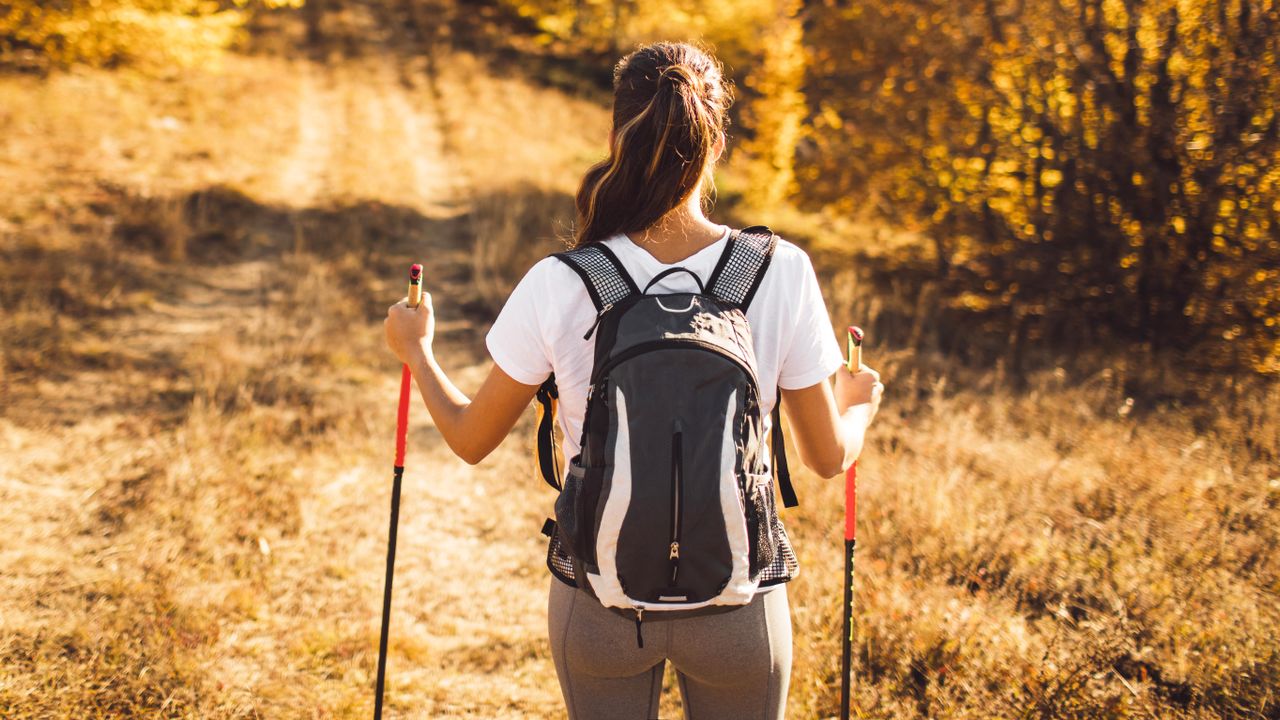Health
I Tried Nordic Walking for a Week—Here’s What Happened

Nordic walking, a technique that employs poles to enhance a standard walk into a comprehensive workout, has gained attention for its unique benefits. After engaging in this exercise daily for a week, I discovered its potential to challenge my body and improve my physical fitness in unexpected ways.
Understanding Nordic Walking
Originating in Finland, Nordic walking was initially developed to help cross-country skiers maintain their fitness during the off-season. Unlike traditional walking, this method involves using poles to engage the upper body while walking. The technique requires walkers to plant the poles diagonally behind them, propelling themselves forward with each step. Research from the Cooper Institute indicates that Nordic walking can burn between 20-46% more calories than standard walking at the same pace. The exercise is low-impact and joint-friendly, making it suitable for a wide range of individuals, including those recovering from injury and older adults.
I decided to give this workout a try, motivated by my interest in low-impact exercises that yield tangible results. Equipped with a pair of OEX Ultralite Carbon Z Walking Poles from Go Outdoors, I set out to explore the benefits of Nordic walking on the rural trails near my home.
The Key Benefits of Nordic Walking
Throughout my week of daily Nordic walking, three distinct benefits stood out as particularly noteworthy.
Firstly, I was surprised by the level of upper body engagement. Initially, I underestimated how much my arms and shoulders would contribute to the workout. From the first day, I felt my triceps and shoulders activating as I pushed back with the poles. Nordic walking involves more than merely holding poles; it requires a rhythmic motion that engages the arms, back, chest, and core. By the end of the week, I experienced a gentle muscle fatigue in my upper body, a reminder that this activity effectively incorporates strength training without needing a gym.
Secondly, I noticed a significant improvement in my posture and walking form. Once I mastered the coordination of my poles with my stride, I became more aware of how I was walking—not just during the exercise, but throughout the day. Nordic walking encourages an upright stance and engages the core, leading to a longer, more intentional stride. I found myself correcting my posture naturally and landing more evenly on my feet. The support provided by the poles helped to distribute my weight more effectively, reducing strain on my hips.
Lastly, I discovered that Nordic walking offered a mental component that I had not anticipated. Initially, I viewed it as a purely physical challenge. However, the necessity of coordinating my arm movements with my steps demanded a level of focus that heightened my awareness of my body. This mindfulness transformed my walks into a calming experience, allowing me to disconnect from distractions like my phone or podcasts. By the end of each session, I felt a sense of tranquility that was especially beneficial for my mental well-being.
In conclusion, my week of Nordic walking revealed a dynamic workout that challenged my body in new ways. While I may not replace all my regular walks with pole-assisted ones, I appreciate the appeal of this exercise, particularly for individuals seeking a low-impact yet engaging full-body workout. If you have access to walking poles or are considering investing in a pair, Nordic walking could provide an exciting shift in your fitness routine.
-

 Lifestyle5 months ago
Lifestyle5 months agoLibraries Challenge Rising E-Book Costs Amid Growing Demand
-

 Sports4 months ago
Sports4 months agoTyreek Hill Responds to Tua Tagovailoa’s Comments on Team Dynamics
-

 Sports4 months ago
Sports4 months agoLiverpool Secures Agreement to Sign Young Striker Will Wright
-

 Lifestyle4 months ago
Lifestyle4 months agoSave Your Split Tomatoes: Expert Tips for Gardeners
-

 Lifestyle4 months ago
Lifestyle4 months agoPrincess Beatrice’s Daughter Athena Joins Siblings at London Parade
-

 Science4 months ago
Science4 months agoSan Francisco Hosts Unique Contest to Identify “Performative Males”
-

 World4 months ago
World4 months agoWinter Storms Lash New South Wales with Snow, Flood Risks
-

 Science5 months ago
Science5 months agoTrump Administration Moves to Repeal Key Climate Regulation
-

 Business5 months ago
Business5 months agoSoFi Technologies Shares Slip 2% Following Insider Stock Sale
-

 Science5 months ago
Science5 months agoNew Tool Reveals Link Between Horse Coat Condition and Parasites
-

 Sports5 months ago
Sports5 months agoElon Musk Sculpture Travels From Utah to Yosemite National Park
-

 Science5 months ago
Science5 months agoNew Study Confirms Humans Transported Stonehenge Bluestones









